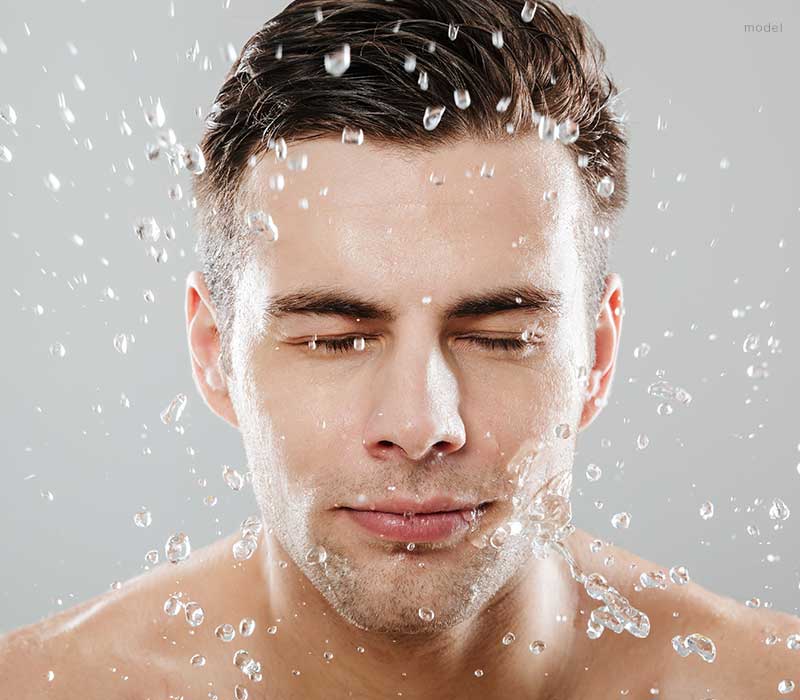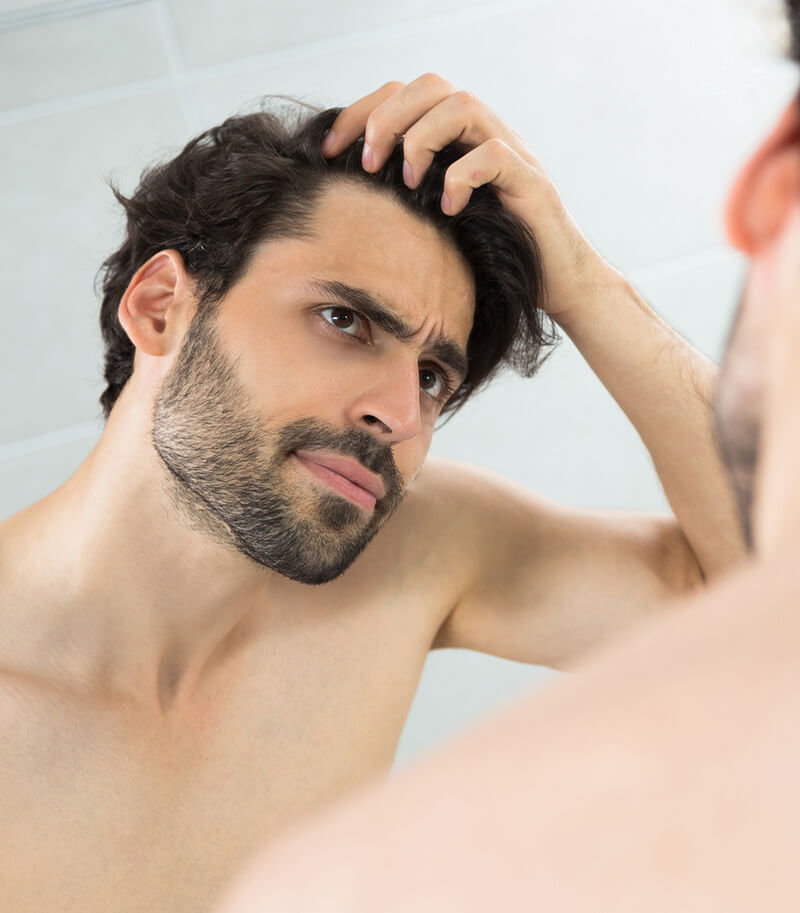
Hair Loss Evaluations
There are many types of hair loss and they can all be a great source of stress for someone.Stress also happens to make most types of hair loss worse. The two main categories of hair loss (alopecia) are non-scarring and scarring alopecia
Schedule a Consultation
Non-Scarring Alopecias
Telogen Effluvium
Telogen effluvium causes visibly increased shedding of hairs. People typically shed between 50-100 hairs per day on their scalp. People with telogen effluvium will often lose over 300 per day. This can happen due to many causes and usually, the defining event occurred 3-6 months prior to the hair noticeably shedding more. Scalp biopsies can confirm this diagnosis. Usually,telogen effluvium is a temporary form of hair loss, lasting 3-6 months and then it resolves without treatment. If due to a drug, it will resolve after stopping the medication. If due to a vitamin deficiency, it will resolve when the deficiency is corrected. Some women have chronic telogen effluvium without an apparent cause.
Common causes include:
- Postpartum
- Post febrile (from extremely high fevers due to illness like malaria)
- Severe Infections
- Severe chronic illness (systemic lupus, HIV, etc.)
- Major surgical procedure
- Major weight loss from crash diet, starvation, weight loss surgery
- Thyroid conditions or other endocrine disorders
- Medications (Accutane, antidepressants, lithium, Beta Blockers, and many others)
- Vitamin deficiencies (iron, Vitamin D)
- Excessive Vitamin A
Alopecia Areata
This is an autoimmune disorder where the immune system attacks hair follicles, causing hair to fall out, usually in round, bald patches. It has been associated with atopic dermatitis and other autoimmune diseases like vitiligo, thyroid disorders, and inflammatory bowel disease. Occasionally this can progress to total scalp (alopecia totalis) or total body hair loss (alopecia universalis.) Sometimes associated nail pitting and other nail findings are also present. Treatment for alopecia areata relies on high potency topical or intralesional corticosteroids. Some also add topical minoxidil 5%. Alopecia areata may come and go. Some people have one or two episodes in their lifetime and others have it chronically. Stress is thought to sometimes precipitate episodes.


Androgenetic Alopecia
Female pattern balding/male pattern balding
This type of hormonal hair loss is so common that it is estimated that 80 % of Caucasian men will be affected by the time they are 70 years old. Affected men are also more likely to have a family history of androgenetic alopecia than affected women. An excess of androgen hormones (dihydrotestosterone) causes a gradual miniaturization of the hairs on the midline and crown of women and the frontal/midline/vertex regions of men. This type of hair loss is often found with telogen effluvium and less often found with alopecia areata. Treatments include 5% topical minoxidil, finasteride and PRP injections.

Scarring Alopecia
CCCA is most commonly seen in black women and typically starts between the ages of 30-50 years. The next most common demographic is Caucasian men over 60 years of age. It is thought to be related to use of chemical hair relaxers or thermal straighteners, but not all people who have this condition have used those hair treatments. CCCA slowly progresses from the center of the scalp around the crown or vertex and moves outward. It is sometimes associated with burning or stinging of the scalp and some experience sore pimple-like bumps. Treatment consists of oral doxycycline and potent topical steroids. The areas where the scars have already formed will not grow back. The treatment is aimed at stopping the inflammation and stopping the progression of the hair loss.
This condition is most often seen in young black men on the occipital scalp. Smooth, firm papules and pustules form around hair follicles and they slowly rupture and cause scarring and hair loss. Treatments involve intralesional corticosteroids, oral antibiotics and surgical excision of non-healing abscesses.
LPP is seen more commonly in women than in men, also more common in Caucasians. It can be seen in the center of the scalp, near the crown/vertex or around the forehead hairline and eyebrows. When it is around the forehead/eyebrows it is often called frontal fibrosing alopecia, but some scholars say that LPP and FFA are two completely different types of hair loss. The treatment ends up being the same for them though. LPP causes scars around hair follicles, causing the hairs to disappear and the remaining hairs have red patches around the follicular openings. There is a lot of inflammation, but nobody knows why this inflammation is happening. Treatment is similar to CCCA: topical or intralesional steroids and oral doxycycline. Treatment for the eyebrows includes low potency topical steroids and topical retinoids. Once again, because this condition causes scarring, the lost hairs will not grow back. The treatment is to stop the hair loss from becoming worse.
DLE can also cause scarring hair loss. It is most common in adult black women. DLE causes circular lesions of scaly, red, atrophic dilated or plugged hair follicles and patches of hair loss. Over time the skin tends to become hypopigmented in the center and hyperpigmented around the edges of the patches of scars. Aggressive sun protection as well as stopping smoking are very important for lupus in general. Topical and intralesional steroid injections to the scalp can help to stop the areas from getting worse.
Traction Alopecia
Traction alopecia usually occurs after years of wearing tight hairstyles, like braids or buns or ponytails.
This is most commonly seen in black women around the bitemporal/frontal scalp line. There is no treatment for this, but a more loose hairstyle is recommended to prevent further loss of hair.
The key to treating any type of hair loss, but especially scarring alopecia, is early recognition of a problem and early intervention. This will help to keep what hair you have and hopefully prevent it from getting worse. PRP for hair loss is a great treatment option for any type of hair loss. We also recommend using products designed for hair loss. Viviscal PRO shampoo, condition, and elixir are designed for those who desire thicker, fuller looking hair. These products create the ideal environment for your hair to flourish by keeping your hair and scalp healthy.
If you are worried about thinning or excessively shedding hair, get an evaluation by your dermatology specialist to see which treatments you are a candidate for.

